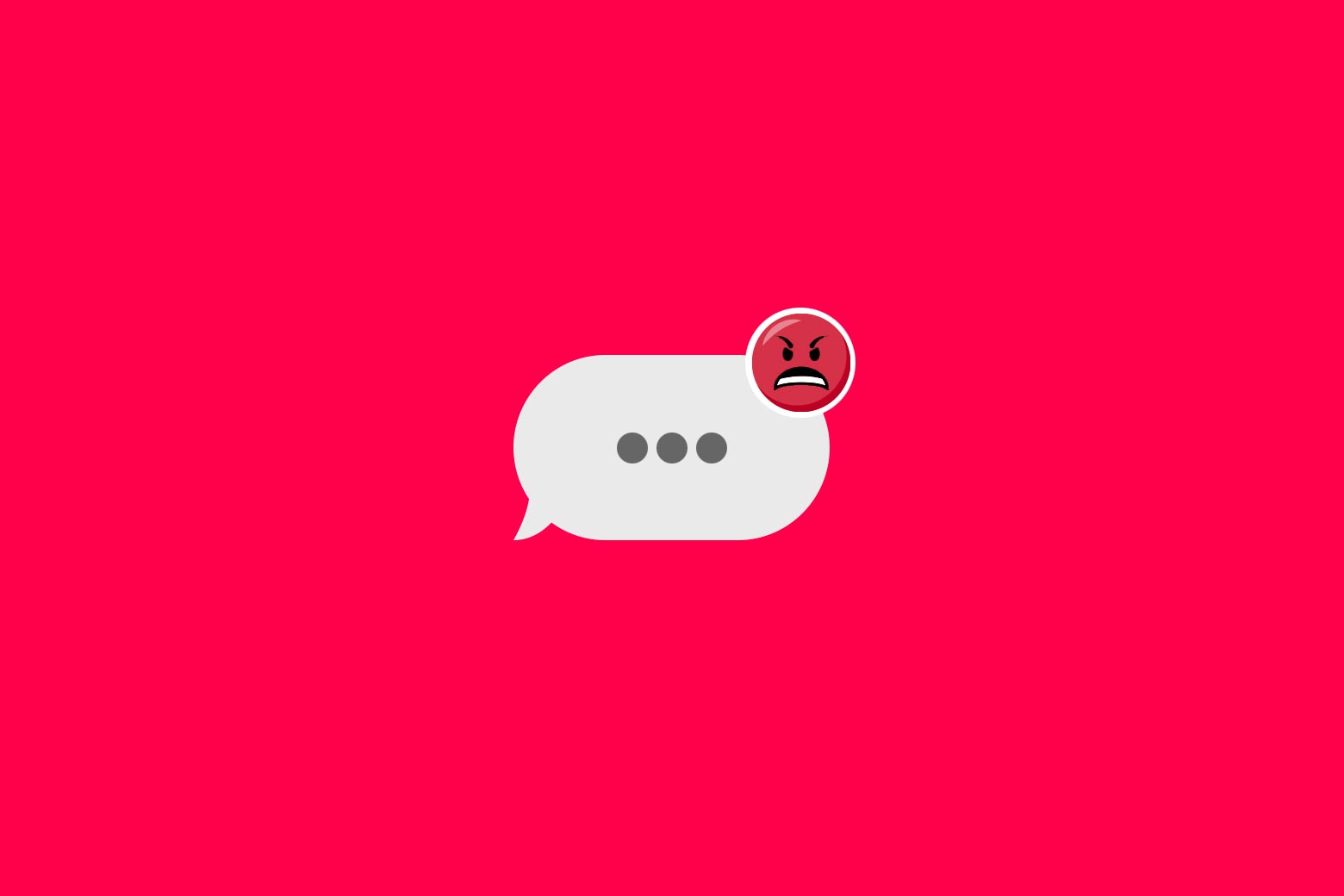Texting is how we now all communicate, which would be fine and pretty easy, except that the rules keep getting more complicated. A small, but terrible, complication was quietly introduced to texting in the fall of 2016, tucked into an update to iPhone operating systems: reactions.
Right now, if you’ve got a friend who employs reactions you’re thinking, Oh God, those stupid things. For the blissfully uninitiated, there are six text reactions: thumbs up, thumbs down, double exclamation point, question mark, a heart, and “HA HA.” When you send someone a text on their iPhone, the recipient may choose to reply normally—you know, by texting back. Or the recipient may emit a reaction, a small blunt tool of confusion. Reactions are confusing and annoying. They’re quietly ruining group chats and therefore our society. Kill them!
Like all facets of texting, these character expressions may seem simple to the untrained eye. Yet they’re less simple than entirely unformed, so meaning-free they require their own Rosetta stone to untangle—without the upside of actually enriching our language the way the vast and varied world of emojis can. The reaction confers no benefit, while making things more complicated. Is it curt to send a cartoon thumbs up to someone who has announced killing it at a work presentation? Is a question mark a sign of curiosity, or passive-aggressive confusion at a grammatical error? Is there anyone on the planet who would experience the warm camaraderie of laughter through “HA HA”?

Are these reactions supposed to be comments? Or some kind of telepathic intonation? From a design standpoint, it’s impossible to tell. While a text has a little tail on one side like a cartoon dialogue bubble, indicating that it is speech, reactions are trailed by a distinct small circle, giving the impression that the response it contains is being not said but thought. It is as though the heart, or thumbs up, is maybe supposed to be a first draft, or an idea, or a feeling, rather than a concrete statement. We simply do not need this additional layer of interpretability—or, really, mis-interpretability.
Under very specific circumstances, reactions can be helpful in one-on-one interactions. Their primary utility is in indicating generously that you have seen a text, a more sophisticated and modern version of “kk,” or the dreaded “k.” I have a couple of dear friends who will often respond with a heart reaction. This is nice because we live in different cities, have busy schedules, and text heavy emotional things that cannot always be addressed immediately but call for some kind of acknowledgment. Also, I know for sure that these women are not passive-aggressive monsters. Utilized between us, the bubbles firmly convey “Got this, I’m available for a phone call soon, I bet you look amazing today.”
Exercise caution using the reaction with anyone with whom you do not have this level of connection. And please—no matter how well you think things are going—exercise extreme caution with anyone you’ve been dating less than six months.
When should you should avoid reactions, no matter what? Group interactions. This is not because reactions are objectively more confusing, meaning-wise, in larger text conversations. In fact, in larger group texts, all information flies so quickly that there often isn’t really time to wonder exactly what anyone is saying. Take things as literally as possible, and move on!

No, reactions ruin group texts because of crummy UI. When a member of a group text reacts to a message, the sender of the message receives a notification. (Fine, I guess, although I do not need a notification for HA HA. But why have this feature at all if at best it functions so similarly to a text?) But to the other people in the text, your reaction is an irritant. It is not clear, for example, who is doing the reacting. To see who reacted to, say, one friend’s text asking if anyone wants to meet up for drinks later, one has to—and I literally just figured this out—hold a finger down on the original text until a summary of the reactions and reactors pops up. Who has ever done this? Who has navigated a constantly shifting iOS interface expertly enough to get this relevant (?) information to pop up?
The other thing—the biggest thing, really—is that reactions only work if you have an iPhone. If you do not, your friend’s reactions are delivered to you cumbersomely spelled out. If you are in a group text with even one Android user, everyone gets everything cumbersomely spelled out. Beware the story of the woman who was the lone iPhone user joining a group text full of Android-ees. When she reacted to a text, her new friends were getting not an ambiguous character in a thought bubble, but the words “laughed at” followed by the entirety of the reacted-to text message. As a befuddled group text mate recounted on Reddit: “ALL OF US WERE GETTING SECRETLY PISSED OFF AT HER!!”
But even should Apple and Android someday combine forces to fix this UI, there’s just no upside to reactions. If you use them, please stop. Apple, please eliminate them! The archaeologists of the future already have enough to untangle with the blood-drop emoji.
